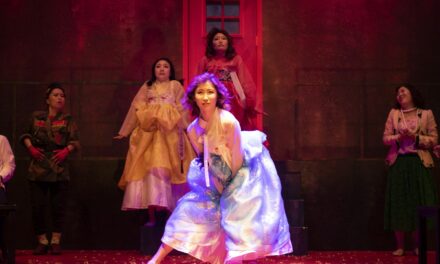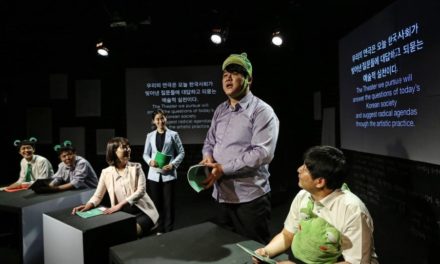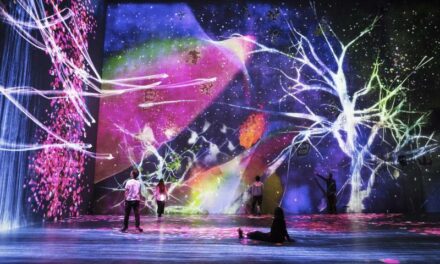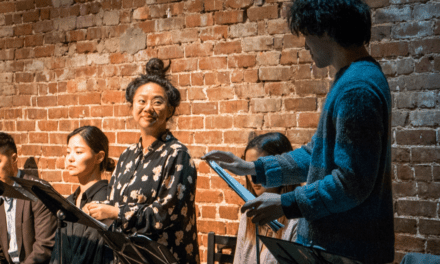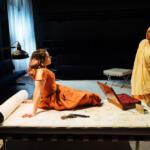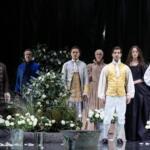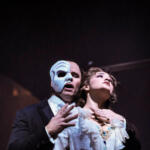In this essay, I want to discuss the interface the Semiotics of Theater and Theater Translation as well as about the theoretical polarization between the notions of performability and readability in Theater Translation since the mid-1980s.
In the first part of the article, I present the different approaches to the study of theater put forward by theater semioticians like Zich, Mukařovský, Bogatyrëv, and Honzl (semioticians of the Prague School), Kowzan, and Ubersfeld. I also demonstrate how all theater semioticians’ agreement that the dramatic text (written text) is radically conditioned by its performability (mise en scène) has had a great impact upon translation studies and has led some theoreticians of translation studies to reexamine their position towards translating theater texts.
In the second part of the paper, I illustrate how Susan Bassnett and Patrice Pavis, a translation theoretician and a theater semiotician, respectively, have polarized theater translation into the notions of performability (or playability) and readability since the mid-1980s.
In the third part, through a descriptive approach to the reception of Sophocles’ Oedipus The King by a wider English-speaking public, I suggest that the theoretical polarization between performability and readability is a reductionist illusion, and conclude that there is “the metaphysics of a (play)text,” once this (play)text is dissociated from its author.
1. Semiotics of Theater and Drama
1.1 Prague School of Semiotics
In Czechoslovakia of the 1930s literary critics and semioticians like Otamar Zich (Elam, 1980), Jan Mukařovský (Elam 1980), Jiří Veltruský (1964, 1976a, 1976b, 1981), Jindřich Honzl (1971, 1976a, 1976b, 1982), and Peter Bogatyrëv (1971, 1976a, 1976b, 1982) in a series of articles attempted to analyze the components of theater in terms of structures and sign systems without however giving special prominence to any of the constituents involved in theatrical performance, a position that had a considerable impact on later semioticians, and is still haunting different theories of theater semiotics today. According to these semioticians–later known as the Prague School of Semiotics–the performance text becomes a unified whole and network of semiotic units belonging to different but cooperative systems; that is, it is a macro-sign whose meaning is constituted by its total effect, and the maker of its meaning is the audience itself.
All four above semioticians talked about the signifying power that the stage bestows upon all bodies and objects that they may lack in everyday life. This ability of the stage to transform objects into signs during a performance is what has been known as “theatrical semiosis” or “stage semiotization,” and had a tremendous impact on Theater Translation.
1.2 Tadeusz Kowzan and Anne Ubersfeld
It was in the late 1960s and 1970s that the Polish semiotician Tadeusz Kowzan and the French semiotician Anne Ubersfeld revitalized theatrical and dramatic studies.
In an article (1968a, 59-90) and a book (1975), Kowzan tried and established a typology of theatrical signs and sign systems, first, by drawing the distinction between natural and artificial signs (1968a, 68; or 1968b, 59) and, second, by establishing thirteen auditive and visual sign systems as the basic components of theater, which are located either inside or outside the actor, and exist in time and place (1968a, 83; 1968b, 73; and 1975, 172). By having done this, Kowzan, first, actually refined the law of “stage semiotization” by asserting that the signifying function the phenomena assume on stage is perceived as being deliberately intended and, second, showed how any written theater text contains within it a set of extralinguistic systems (i.e., pitch, intonation, accent, etc.) as well as an undertext (or gestural text), which are determined by the movements an actor makes while acting.
In a book (1978), Anne Ubersfeld claimed that any notion of theater must see written text and performance as indissolubly linked; and second, that the written text is incomplete (“troué”; lit. with holes) in itself. She further argued how the perception of performance as a “translation” reinforced the belief that the linguistic sign system of the written text would be identical to a system of performance signs (Ubersfeld 1978b, 15-16). Moreover, Ubersfeld draws a distinction between the written text (T), the performance (P), and a text that is mediated between the two but which is a necessary component of the final product (T1). Hence, she sets out the equation T + T1 = P, where T1 is the text that provides the answers to the questions posed by the gaps in T.
2. Theater Translation
Although all aforementioned semioticians offered different approaches to the study of theater, they all agreed that the dramatic text (written text) is radically conditioned by its performability (mise en scène). It was that position that led some theoreticians of translation studies to reexamine their own position towards translating theater texts in the 1980s and 1990s.
2.1. 1980s–Bassnett’s Oscillation Between Performability and Readability of a Theater Translation
In the early 1980s, Susan Bassnett, following the theories advocated by the Prague School of Semiotics and Ubersfeld theories that the dramatic text (the written text or literature proper) is radically conditioned by its performability was one of the first scholars in translation studies to point out that the theater translator must meet two criteria more than the translator of prose or poetry. The first criterion is that of playability or performability (1991b) and the second is that of the function of the translated text in time. Then, Bassnett postulated that if performability is seen as a prerequisite for the theater translator, then the translator must determine which structures are performable and translate them into the target language (TL)—even though major linguistic and stylistic changes may occur. Furthermore, the theater translator encounters the continual change in time of performability, and, thus, s/he must consider both the performance aspect of the written text (its gestural patterning) and its relationship to its contemporary audience. In this sense, a theater translator faces the public dimension of the text when attempting to make his/her translation effective (1991b).
Nevertheless, a few years later–in 1985, Bassnett in her article Ways Through The Labyrinth: Strategies And Methods For Translating Theatre Texts, calls performability a “very vexed term” (1985a, 90), and the solution she now proposed was to enquire into the deictic units of the text and analyze their function in both source-language (SL) and target-language (TL) texts which is of great importance (Bassnett 1985a, 101), and end up claiming that the written text the translator has to work and it is with the written text that the translator must begin (1985a, 102).
2.2. 1990s–Polarization Between Performability and Readability
In the 1990s it seemed that the theoreticians of theater translation stood between two extremes: that of performability (mise en scène, advocated by Pavis) and readability (written text, advocated by Bassnett), as discussed below.
2.2.1 Pavis’s Views On Theater Translation, Gestural Universality, and a Universality Of Culture
In his article Problems Of Translation For The Stage: Intercultural And Post-Modern Theatre, Patris Pavis believes that theater translation is situated at the intersection of enunciation of both source and target cultures (SCs and TCs) and, eventually, the translated text always consists partly of source text and partly of target text and target culture, because any transfer involves the multiple dimensions of the source text (ST) adapted to the target language (TL) and TC. He also claims that any reception of a theater translation is conditioned primarily by the ability of the future audience to understand theatrical and acting conventions.
Nevertheless, in examining the conditions of the reception of the theater translation, Pavis brings up the issue of mise en scène in such a way that the stage performance takes precedence over the linguistic text. For Pavis, it is the economy of the dramatic text and its translation for the stage that allows the actor to supplement the text by extralingual (i.e., intonation, pitch, etc.) and paralingual (i.e., gestures, mime, kinesics, etc.) means, which ensure the exchange between word and body, or what he calls the language-body.
Later in his article and, more particularly in the section Intercultural Translation, Pavis presents his own view on theater translation, in that the translation itself “would be a ‘conductor’ between the two cultures and which would cope with proximity as well as distance” (1989, 38). In the same section of the article, although Pavis recognizes the diversity of ethnic and national origins, he argues for a gestural universality and a universality of culture, and arrives at the following conception of culture and theater translation: “Culture thus becomes this vague notion whose identity, determination, and precise place within infra- and superstructure we no longer know. …theater translation is never where one expects it to be: not in words, but in gesture, not in the letter, but in the spirit of a culture, ineffable but omnipresent.” (1989, 42; emphasis added).
2.2.2 Bassnett’s Recent Theories Regarding Theater Translation
In her articles Translating For The Theatre—Textual Complexities (1990) and Translating For The Theatre: The Case Against Performability (1991a), Bassnett refutes the encoded spatial or gestural dimension of the language of a theater text, and claims that any such notion is problematic for the interlingual translator because it makes his task “superhuman” (1991a, 100), and that there is the assumption is that during the translation process it is the translator’s responsibility to decode the gestic text while he sits at a desk and imagines the performance dimension; and, in Bassnet’s opinion, this situation does not make any sense at all! (1991a, 100)
It is in Bassnett’s The Case Against Performability, however, that the theoretical polarization between Bassnett’s and Pavis’s positions can be seen more clearly. In this article, Bassnett discusses Pavis’s Problems Of Translation For The Stage: Intercultural And Post-Modern Theater and charges him on the grounds that he favors mise en scène (performability) to the written text in his hierarchical system, and that he considers the written theater text an incomplete entity.
Then, Bassnett raises three arguments to refute any notion of performability. Her first argument is that performability has been used by English translators, directors, and impresarios as an excuse for various linguistic strategies they take; that is, handing over a supposedly literal translation to a monolingual playwright; or justifying substantial cuts and additions in the Target Language (TL) text (see also Bassnett 1990, 77); or other arbitrary decisions they take. Her second argument against performability comes from a different angle: that from “theater anthropology” (Bassnett, 1991a). As an advocate of this kind of theater, Bassnett totally disagrees the perception of the multilayered structure of the play as the constant (invariables or the universal) elements that cross cultural boundaries. She rather claims that the inconstant (variable or/ particular) elements should be investigated. Bassnett wholeheartedly agrees with Susan Melrose that there is no such a universal gestus; gestus can only be culture-bound.
In her third and last argument against performability, Bassnett holds that the very core of this notion derives from the naturalist theater and the effort of the interlingual translator to escape the domineering presence of both the playwright and the performance text. Finally, she concludes that the notion of performability was invented by translators in order to escape from that servile relationship and to exercise greater liberties with the written text than naturalist conventions allowed. In the last but most condensed paragraph of this article, Bassnett invites translation scholars to limit their investigations only into (a) a historiography of theater translation and (b) the linguistic structure of existing theater texts (1991a, 111).
3. A blurring of borderlines that leads towards “the metaphysics of a (play)text”
Nonetheless, the theoretical polarization of performability and readability is not very convincing when one examines how the notions of performability and readability function through time in actual translations and/or adaptations and (their) theatrical performances. Thus, having taken as a test case Sophocles’ Oedipus The King and having done an in-depth research into the reception of this Greek tragedy through translations, adaptations, and theatrical performances, I have found that this polarization is rather a reductionist illusion.
More specifically, in my dissertation (1994a), in one of my published articles (1994b) and in my very recent presentation in the international conference Intersemiotic Translation, Adaptation, Transposition: Saying Almost The Same Thing? (2017), I have demonstrated that when one examines a theatrical play, like Sophocles Oedipus The King, as a translation, adaptation, publication, and theater (and/or film) production, it defies any theoretical polarization of performability and readability. It rather shows that a text, written and performed in Greece of the 5th century BCE, can be translated literally in English by a classical philologist (Jebb), adapted for an Irish stage (the Abbey Theatre) by an Irish poet (W.B. Yeats) in the early 20th century. And this adaptation by W.B. Yeats was to dominate, on the one hand, the British and North American stage–with the theatrical productions of Oedipus at the Abbey Theatre in 1926 (Nikolarea, 1994a, 122-134; Nikolarea, 1994b, 32-36; Nikolarea 2017), the Old Vic productions of Oedipus Rex in London and New York in 1945 and 1946 respectively (Nikolarea, 1994a, 139-147; Nikolarea 2017) [1] and with the Stratford Shakespearean Festival Productions of Oedipus Rex in Ontario, Canada, in 1954 and 1955 (Nikolarea, 1994a, 161-174; Nikolarea 2017) [2]–and, on the other hand, a wider English readership, since this specific adaptation of a literal translation of Oedipus The King appeared in a wide variety of anthologies in the UK, the USA, and Canada (Nikolarea, 1994a, 290-292; Nikolarea 2017).
As shown from my research, there are no precise divisions between a performance-oriented translation and a reader-oriented translation, but rather there is a blurring of borderlines between the theoretical notions of performability and readability, which, in my opinion, is due to two main causes.
First, intercultural communication always depends on varied and complex processes, which influence not only the production of a theater translation but also its distribution and reception by a multifaceted target public. In order to determine what is involved in these processes and to propose a sound working hypothesis for theater translation (Nikolarea 1999, 183-202), I took an interdisciplinary approach that went beyond a strict “investigation into the linguistic structuring of extant theater texts” or a limited “historiography of theatre translation” (Bassnett 1991a, 111); I also included extratextual, paratextual, and peritextual evidence (Nikolarea 1994a, 82-217).
The second reason for the blurring of the borderlines between the theoretical concepts of performability and readability points to the fact that these two extreme positions, no matter how different they are, seem to share, in principle, the weakness of all prescriptive approaches to translation studies; that is, what a translator should do and not what a translator is actually doing. Furthermore, prescriptive approaches to translation studies do not explore how a translation (or adaptation) is used by different theater producers and book editors through years and how these productions or editions are received by a wider public, aspects that descriptive approaches to translation studies do. Thus, following Toury’s descriptive studies of translation (1980), I have applied a descriptive approach to the reception of Sophocles’ Oedipus The King by a wider English-speaking public in my dissertation (1994a), my working hypothesis for theatre translation (1999). Moreover, and in my recent presentation of Sophocles’ Oedipus The King (2017), after I had presented how Yeats’s adaptation of this tragedy (a written text that was performed at the Abbey Theatre) dominated British and American stage and appeared in a great variety of anthologies in the UK and North America, I drew the conclusion that, instead of being caught between the notions of performability and readability, we should explore “the metaphysics of a (play)text;” that is, once dissociated from its author, a (play)text can be staged in the same language and culture [or Source Language (SL) and Source Culture (SC)], translated and put on stage as many times as some underlying literary, theatrical and social factors require in a given Target Culture (TC) at a given time (synchrony) or at different points of time (diachrony).
And this metaphysics of a (play)text is valid not only for a theater text but also for any kind of text (i.e. literary, philosophical, pedagogical, digital) that can be re-read/viewed, translated, re-interpreted by and within a given culture at a given time. And this re-interpretation or various re-interpretations of a (play)text at different place(s) and time(s) show(s) that there are inherent characteristics within the (play)text, combined with some social factors working in a given culture at a given time, which make the (play)text and its translations, adaptations, and theatrical performances overcome space and time barriers and become widely known, despite the fact that the initial author, translator, adapter and/or stage (or filmic) producer may be dead.
[1] In those Old Vic Productions (using Yeats’s adaptation of Jebb’s literal translation of Oedipus) the role of Oedipus was played by Sir Laurence Olivier and the role of Jocasta was played by Sybil Thorndike; the director was Michel Saint-Denis, the setting designer was John Piper and the costume designer was Marie-Hélène Dasté. One can see how Stanislavski’s psychological realism was implemented in the theatrical realism of those productions in some photos taken from those productions.
[2] In those Stratford Shakespearean Festival Productions of Oedipus Rex (using Yeats’s adaptation of Jebb’s literal translation of Oedipus) the role of Oedipus was played by James Mason (1954) and by Douglas Campbell (1955); the director was Sir Tyrone Guthrie and Tanya Moiseiwitsch was the costume and mask designer. One can see how Guthrie’s personal theory of theatre as ritual transformed Oedipus into a symbol and the Chorus into a collective entity by using masks approximated to those of ancient Greek performances; one can also experience Guthrie’s stage experimentation and listen to Yeats’s adaptation performed by the masked actors.
Works cited
Bassnett, Susan. 1985a. “Ways through the Labyrinth: Strategies and Methods for Translating Theatre Texts.” The Manipulation of Literature. Ed. Theo Hermans. London: Croom Helm; New York: St Martin’s. 87-102.
–1990. “Translating for the Theatre—Textual Complexities.” Essays in Poetics 15.1. 71-83.
–1991a. “Translating for the Theatre: The Case Against Performability.” TTR (Traduction, Terminologie, Redaction) IV.1. 99-111.
–1991b. Translation Studies. rev. ed. London and New York: Routledge. (1st ed. 1980).
Bogatyrëv, Peter. 1971. “Les signes du théâtre.” Poétique 8. 517-30.
–1976a. “Costume as a Sign.” Semiotics of Art: Prague School Contributions. Eds. L. Metejka and I. R. Titunik. Cambridge: MIT Press. 13-19.
–1976b. “Semiotics in the Folk Theater.” Semiotics of Art: Prague School Contributions. Eds. L. Metejka and I. R. Titunik. Cambridge: MIT Press. 33-49.
–1982. “Contribution to the Study of Theatrical Signs.” The Prague School. Ed. Peter Steiner. Austin: Univ. of Texas Press. 52-64.
Elam, Keir. 1980. The Semiotics of Theatre and Drama. London and New York: Methuen.
Honzl, Jindřich. 1971. “La mobilité du signe théâtral.” Travail Théâtral 4. 5-20.
–1976a. “Dynamics of Sign in the Theater.” Semiotics of Art: Prague School Contributions. Eds. L. Metejka and I. R. Titunik. Cambridge: MIT Press. 74-93.
–1976b. “The Hierarchy of Dramatic Devices.” Semiotics of Art: Prague School Contributions. Eds. L. Metejka and I. R. Titunik. Cambridge: MIT Press. 118-27.
–1982. “Ritual and the Theater.” The Prague School. Ed. Peter Steiner. Austin: Univ. of Texas Press. 135-73.
Kowzan, Tadeusz. 1968a. “Le signe au théâtre: introduction à la sémiologie de l’art du spectacle.” Diogène 61. 59-90.
–1968b. “The Sign in the Theater: An Introduction to the Semiology of the Art of the Spectacle.” Trans. Simon Pleasance. Diogenes 61. 52-80.
–1975. Littérature et spectacle. The Hague: Mouton.
Levý, Jiří. 1967. “Translation as a Decision Process.” To Honor Roman Jakobson: Essays on the Occasion of his Seventieth Birthday, 11 October 1966. The Hague: Mouton. 111-182.
–1969. Die literarischen Übersetzung: Theorie einer Kunstgattung. Frankfurt: Athenäum.
–1976. “The Translation of Verbal Art.” Semiotics of Art: Prague School Contributions. Eds. L Matejka and I R Titunik. Cambridge: MIT Press. 218-27.
Mukařovský, Jan. 1976. “The Art as a Semiological Fact.” Semiotics of Art: Prague School Contributions. Eds. L Matejka and I R Titunik. Cambridge: MIT Press. 3-9.
Nikolarea, Ekaterini. 1994a. A Communicative Model for Theatre Translation: Versions of Oedipus the King in English. Ph.D. diss., University of Alberta.
–1994b. “Greek Tragedy in Translation: Sophocles’ Oedipus the King in English.” Translation Review 46. 24-43.
–1994c. “Oedipus the King: A Greek Tragedy, Philosophy, Politics and Philology.” TTR (Traduction, Terminologie, Redaction) VII.1. 219-66. VII.1. 219-66.
–1999. “A Communicative Model for Theatre Translation.” From Kievan Prayers to Avantgarde: Papers in Comparative Literature. Eds. Piotr Fast and Wacław Osadnik. Warsaw: Wydawnictwo Energeia. 183-202.
–2017. “Sophocles’ Oedipus the King into intersemiotic crossovers and among powerful discourses”, presented in the international conference “Intersemiotic Translation, Adaptation, Transposition: Saying almost the same thing?”, organized by the Department of English Studies, University of Cyprus, on 12 November 2017.
Old Vic Productions (using Yeats’s adaptation) of Oedipus Rex in London and New York in 1945 and 1946; some photos taken from those productions can be viewed here.
Pavis, Patrice. 1989. “Problems of Translation for Stage: Intercultural and Post-Modern Theatre.” The Play Out of Context: Transferring Plays from Culture to Culture. Trans. Loren Kruger, Eds. Hanna Scolnicov and Peter Holland. Cambridge: Cambridge Univ. Press. 25-44.
Stratford Shakespearean Festival Productions of Oedipus Rex, using Yeats’s adaptation, in Ontario, Canada, in 1955 and 1956 can be watched here and/or here.
Toury, Gideon. In Search of a Theory of Translation. Porter Institute for Poetics and Semiotics, Tel Aviv University, 1980.
Ubersfeld, Anne. 1978. Lire le théâtre. Paris: Éditions sociales.
Veltruský, Jiří. 1964. “Man and Object in the Theater.” A Prague School Reader on Esthetics, Literary Structure and Style. Ed. Paul L. Garvin. Washington: Georgetown Univ. Press. 83-91.
–1976a. “Dramatic Text as a Component of Theater.” Semiotics of Art: Prague School Contributions. Eds. L. Matejka and I. R. Titunik. Cambridge: MIT Press. 94-117.
–1976b. “Construction of Semiotic Contexts.” Semiotics of Art: Prague School Contributions. Eds. L. Matejka and I. R. Titunik. Cambridge: MIT Press. 134-44.
–1981. “The Prague School Theory of Theater.” Poetics Today 2.3. 225-35.
by Dr. Ekaterini Nikolarea
This post was written by the author in their personal capacity.The opinions expressed in this article are the author’s own and do not reflect the view of The Theatre Times, their staff or collaborators.
This post was written by Ekaterini Nikolarea.
The views expressed here belong to the author and do not necessarily reflect our views and opinions.


